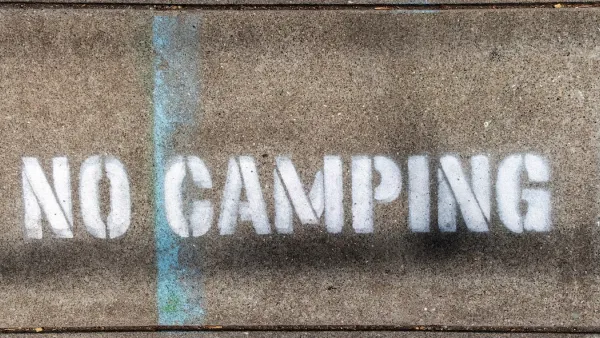The annual ‘point in time’ count fails to capture the diverse types of situations experienced by unhoused people in rural communities.

A study from the Rural Opioid Initiative at Georgia State University found that rural homelessness in the United States could be dramatically underestimated. According to a report by Liz Carey in The Daily Yonder, a survey conducted by the researchers reveals a gap between their findings and federal Point in Time count data.
This is partly because being houseless in rural areas looks different than in urban areas, says researcher April Ballard. “Rural people without housing may live in different situations — with relatives, or in tents, or in cars, Ballard said — instead of living in shelters or on the street. That makes finding and identifying them difficult at best.” A survey in Kentucky estimated the number of unhoused people at five times the number collected in the national annual survey. “In three counties, the research found, the “point in time” counts estimated there were no people who were homeless, while Ballard and her group found more than 100 people in those same counties who said they had used drugs and experienced homelessness in the previous six months.”
The data disparity matters, since the count becomes tied to resource allocation. “From a policy standpoint, it’s incredibly important for us to be capturing accurate information and accurate estimates, so that we’re actually dedicating the right amount of resources to communities,” Ballard points out.
FULL STORY: Study: Rural Homelessness Is Underestimated and Exacerbated by Opioid Epidemic

National Parks Layoffs Will Cause Communities to Lose Billions
Thousands of essential park workers were laid off this week, just before the busy spring break season.

Retro-silient?: America’s First “Eco-burb,” The Woodlands Turns 50
A master-planned community north of Houston offers lessons on green infrastructure and resilient design, but falls short of its founder’s lofty affordability and walkability goals.

Delivering for America Plan Will Downgrade Mail Service in at Least 49.5 Percent of Zip Codes
Republican and Democrat lawmakers criticize the plan for its disproportionate negative impact on rural communities.

Test News Post 1
This is a summary

Test News Headline 46
Test for the image on the front page.

Balancing Bombs and Butterflies: How the National Guard Protects a Rare Species
The National Guard at Fort Indiantown Gap uses GIS technology and land management strategies to balance military training with conservation efforts, ensuring the survival of the rare eastern regal fritillary butterfly.
Urban Design for Planners 1: Software Tools
This six-course series explores essential urban design concepts using open source software and equips planners with the tools they need to participate fully in the urban design process.
Planning for Universal Design
Learn the tools for implementing Universal Design in planning regulations.
EMC Planning Group, Inc.
Planetizen
Planetizen
Mpact (formerly Rail~Volution)
Great Falls Development Authority, Inc.
HUDs Office of Policy Development and Research
NYU Wagner Graduate School of Public Service





























